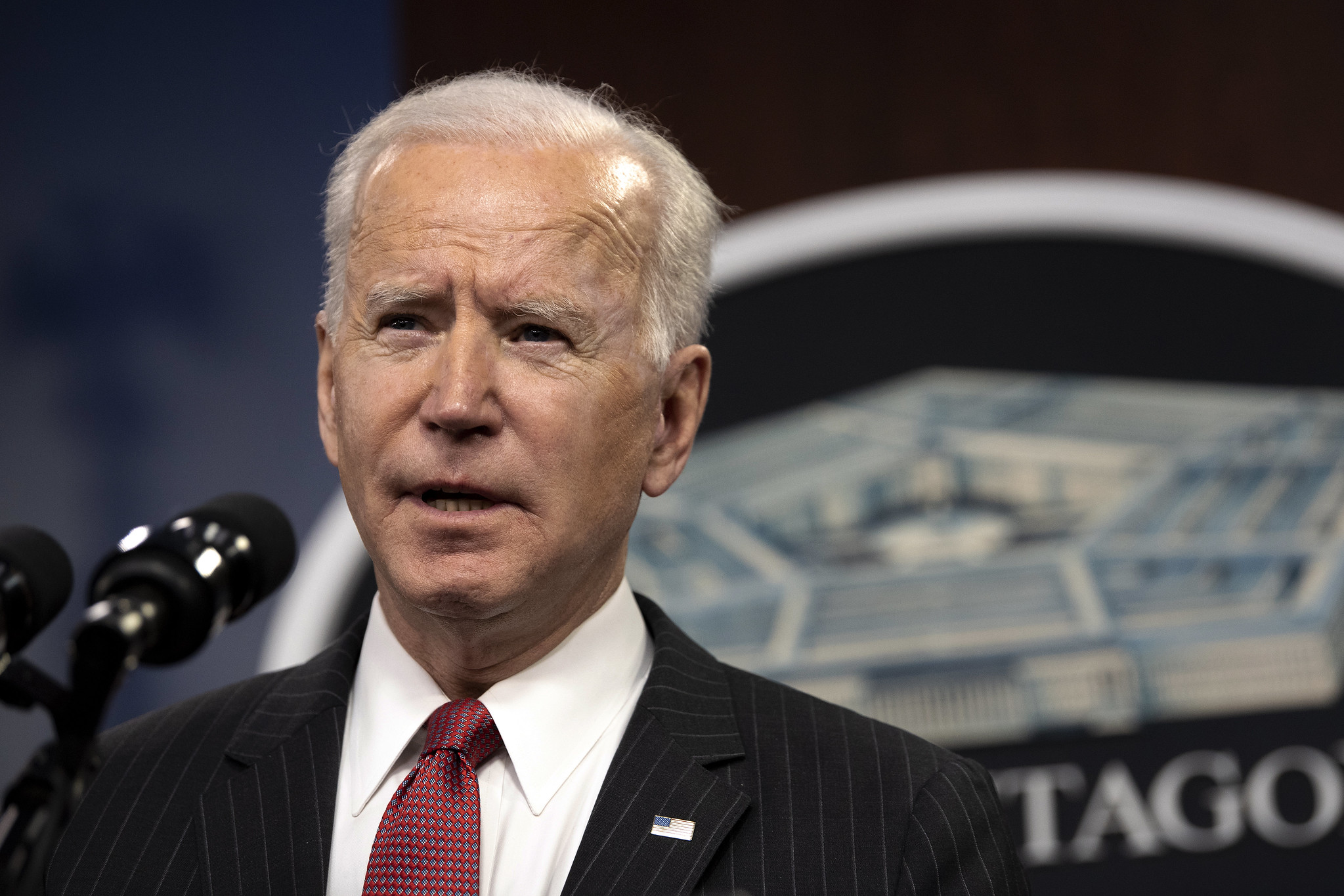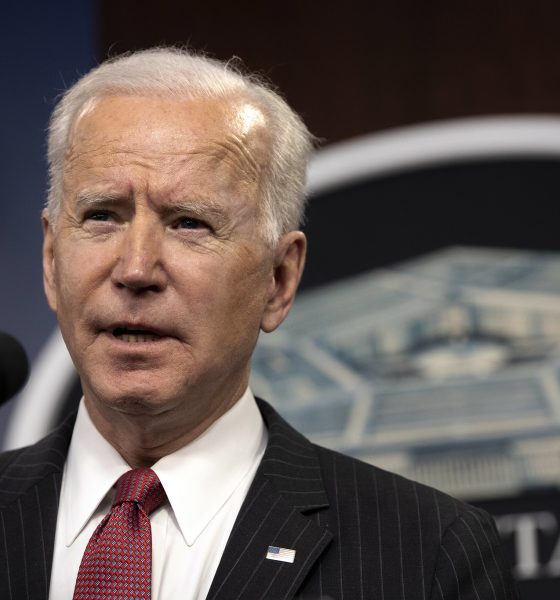

News
President Biden’s climate plan, potential EV updates expected to be announced Thursday
President Joe Biden is expected to pledge to halve the United States’ emission of greenhouse gases by 2030 on Thursday. Biden, along with 40 world leaders at a virtual summit, will discuss the potential plans to reduce greenhouse gases by at least half through several different methods. One is the President’s plan to increase the proficiency and utilization of electric vehicles in both consumer and government sectors, a plan that could pay dividends to several automakers as EVs begin to become a more popular mode of transportation. Biden has spoken highly of EVs and their contribution to slicing greenhouse gas emissions, and new updates could be announced as early as Thursday.
According to the Washington Post, Biden could announce plans to halve greenhouse gases by 2030. The plan will be set forward by monumental changes in the United States’ infrastructure, including transportation and energy, which have long been dominated by oil, coal, and other fossil fuels. These sources of energy have contributed to an increase in greenhouse gases, which have, in turn, contributed to the issue of global climate change. The Summit is expected to last through Friday and will have several prominent world leaders in attendance. China announced earlier today that President Xi Jinping would be in attendance. China is the largest contributor to CO2 emissions, according to the EPA.
Biden’s plans have been evident since the day he took office as the President. One of the most popular issues at hand, climate change, was among the President’s most important issues, along with handling the COVID-19 pandemic. However, halving the U.S. emissions by 50% is a lofty target, especially in just nine years. It will take strong incentives and standards to convince individuals, private sectors, and others to adopt the changes as well, and it isn’t going to be easy.
However, Biden’s entrance into office has brought along a new sense of energy regarding the environmental concerns that the world faces. Many consumers have been highly interested in Biden’s potential reintroduction of the EV tax credit, which would give those who purchase an electric vehicle a credit for buying an environmentally-friendly car. The amount of the credit has been speculated heavily, but it seems it will be somewhere between $7,000 and $10,000. Biden has also announced plans to electrify the government fleet, including the U.S. Postal Service vehicles.
President Biden’s $174 billion EV package broken down dollar by dollar
The EV tax credit was introduced and is still active for automakers that sell less than 200,000 units per year. This disqualifies large automakers who sell substantial units of EVs, including Tesla and GM. Other legacy automakers, like Ford, are still rolling out initial EV plans but are making conscious efforts to transition away from combustion engines and toward electrification.
The event will also take place on Earth Day, the annual celebration of the planet and a day to support environmental protection. Hopefully, President Biden’s long-term climate plans will bring light to what the U.S. must do to combat climate change, which can be accomplished through a calculated plan that outlines specific goals that would incentivize Earth-friendly actions.

News
Tesla FSD fleet is nearing 7 billion total miles, including 2.5 billion city miles
As can be seen on Tesla’s official FSD webpage, vehicles equipped with the system have now navigated over 6.99 billion miles.

Tesla’s Full Self-Driving (Supervised) fleet is closing in on almost 7 billion total miles driven, as per data posted by the company on its official FSD webpage.
These figures hint at the massive scale of data fueling Tesla’s rapid FSD improvements, which have been quite notable as of late.
FSD mileage milestones
As can be seen on Tesla’s official FSD webpage, vehicles equipped with the system have now navigated over 6.99 billion miles. Tesla owner and avid FSD tester Whole Mars Catalog also shared a screenshot indicating that from the nearly 7 billion miles traveled by the FSD fleet, more than 2.5 billion miles were driven inside cities.
City miles are particularly valuable for complex urban scenarios like unprotected turns, pedestrian interactions, and traffic lights. This is also the difference-maker for FSD, as only complex solutions, such as Waymo’s self-driving taxis, operate similarly on inner-city streets. And even then, incidents such as the San Francisco blackouts have proven challenging for sensor-rich vehicles like Waymos.
Tesla’s data edge
Tesla has a number of advantages in the autonomous vehicle sector, one of which is the size of its fleet and the number of vehicles training FSD on real-world roads. Tesla’s nearly 7 billion FSD miles then allow the company to roll out updates that make its vehicles behave like they are being driven by experienced drivers, even if they are operating on their own.
So notable are Tesla’s improvements to FSD that NVIDIA Director of Robotics Jim Fan, after experiencing FSD v14, noted that the system is the first AI that passes what he described as a “Physical Turing Test.”
“Despite knowing exactly how robot learning works, I still find it magical watching the steering wheel turn by itself. First it feels surreal, next it becomes routine. Then, like the smartphone, taking it away actively hurts. This is how humanity gets rewired and glued to god-like technologies,” Fan wrote in a post on X.
News
Tesla starts showing how FSD will change lives in Europe
Local officials tested the system on narrow country roads and were impressed by FSD’s smooth, human-like driving, with some calling the service a game-changer for everyday life in areas that are far from urban centers.

Tesla has launched Europe’s first public shuttle service using Full Self-Driving (Supervised) in the rural Eifelkreis Bitburg-Prüm region of Germany, demonstrating how the technology can restore independence and mobility for people who struggle with limited transport options.
Local officials tested the system on narrow country roads and were impressed by FSD’s smooth, human-like driving, with some calling the service a game-changer for everyday life in areas that are far from urban centers.
Officials see real impact on rural residents
Arzfeld Mayor Johannes Kuhl and District Administrator Andreas Kruppert personally tested the Tesla shuttle service. This allowed them to see just how well FSD navigated winding lanes and rural roads confidently. Kruppert said, “Autonomous driving sounds like science fiction to many, but we simply see here that it works totally well in rural regions too.” Kuhl, for his part, also noted that FSD “feels like a very experienced driver.”
The pilot complements the area’s “Citizen Bus” program, which provides on-demand rides for elderly residents who can no longer drive themselves. Tesla Europe shared a video of a demonstration of the service, highlighting how FSD gives people their freedom back, even in places where public transport is not as prevalent.
What the Ministry for Economic Affairs and Transport says
Rhineland-Palatinate’s Minister Daniela Schmitt supported the project, praising the collaboration that made this “first of its kind in Europe” possible. As per the ministry, the rural rollout for the service shows FSD’s potential beyond major cities, and it delivers tangible benefits like grocery runs, doctor visits, and social connections for isolated residents.
“Reliable and flexible mobility is especially vital in rural areas. With the launch of a shuttle service using self-driving vehicles (FSD supervised) by Tesla in the Eifelkreis Bitburg-Prüm, an innovative pilot project is now getting underway that complements local community bus services. It is the first project of its kind in Europe.
“The result is a real gain for rural mobility: greater accessibility, more flexibility and tangible benefits for everyday life. A strong signal for innovation, cooperation and future-oriented mobility beyond urban centers,” the ministry wrote in a LinkedIn post.
News
Tesla China quietly posts Robotaxi-related job listing
Tesla China is currently seeking a Low Voltage Electrical Engineer to work on circuit board design for the company’s autonomous vehicles.

Tesla has posted a new job listing in Shanghai explicitly tied to its Robotaxi program, fueling speculation that the company is preparing to launch its dedicated autonomous ride-hailing service in China.
As noted in the listing, Tesla China is currently seeking a Low Voltage Electrical Engineer to work on circuit board design for the company’s autonomous vehicles.
Robotaxi-specific role
The listing, which was shared on social media platform X by industry watcher @tslaming, suggested that Tesla China is looking to fill the role urgently. The job listing itself specifically mentions that the person hired for the role will be working on the Low Voltage Hardware team, which would design the circuit boards that would serve as the nervous system of the Robotaxi.
Key tasks for the role, as indicated in the job listing, include collaboration with PCB layout, firmware, mechanical, program management, and validation teams, among other responsibilities. The role is based in Shanghai.
China Robotaxi launch
China represents a massive potential market for robotaxis, with its dense urban centers and supportive policies in select cities. Tesla has limited permission to roll out FSD in the country, though despite this, its vehicles have been hailed as among the best in the market when it comes to autonomous features. So far, at least, it appears that China supports Tesla’s FSD and Robotaxi rollout.
This was hinted at in November, when Tesla brought the Cybercab to the 8th China International Import Expo (CIIE) in Shanghai, marking the first time that the autonomous two-seater was brought to the Asia-Pacific region. The vehicle, despite not having a release date in China, received a significant amount of interest among the event’s attendees.








